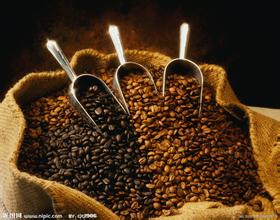How to grow coffee berries and beans

Coffee fruit is a berry, also known as comb fruit. Oval, 9-14 mm long, young fruit green, red at maturity, purplish red. Each fruit generally has two seeds, but also one or three, showing a semi-oval, there is a longitudinal groove, called grooves.
This is the past life of coffee beans, there are coffee branches, leaves, fruits, as well as dissected pulp, seeds, roasted coffee beans.
What we see every day are roasted brown coffee beans, and at most we have seen yellow-green raw coffee beans. What did the coffee beans look like at first as a kind of fruit?
Coffee tree is a small evergreen tree of Rubiaceae, native to Ethiopia. Small evergreen trees or shrubs of tropical and subtropical regions. Leaves long ovate, flowers white, bearing crimson berries. There are small fruit, medium fruit, big fruit coffee and so on.
The fruit of coffee is a berry, also called a drupe. And because it looks like a cherry, it is also called coffee cherry, the fruit is oval.
The young fruit of immature coffee is green, yellow when semi-mature, red and purplish red when mature, and black when overripe and withered fruit is not harvested in time.
Most of the ripe coffee fruits are red and a few varieties are yellow, such as yellow bourbon.
Each coffee fruit generally has 2 seeds, and there are a few cases of 1 and 3 seeds. The seed is semi-oval and has a longitudinal groove called grooves.
A single bean with 1 seed (also known as round bean), the most common 2 seeds (also known as flat bean), and coffee fruit with 3 seeds are relatively rare.
Exocarp: made up of a thin layer of hard woody cells with stomata scattered outside
Mesocarp: pulp, which is composed of several layers of large polygonal and lignified cells, the innermost layers of cells are slightly compressed, and vascular bundles containing a lot of fibers can be seen between the cells.
Endocarp: seed shell, also known as sheepskin, is a thin horny shell composed of stone cells; (coffee beans without removal of seed coat can only be used for cultivation, but cannot germinate once the seed coat is removed; long-term storage of coffee beans exists in this state until it is determined for trade or export)
Seed coat: silver coat, which is the thin coat of the outer layer of the seed. The color and thickness of the seed coat is one of the distinguishing characteristics of varieties.
Kernel: coffee beans without silver skin, that is, commercial coffee beans. The seed contains two parts: endosperm and embryo, and the embryo is at the base of endosperm. Cutting the endosperm shows a pair of fleshy sunflower fan-shaped cotyledons and white embryos.
After the coffee fruit is picked, it is washed or dried into our common raw coffee beans. Raw beans are then baked at high temperature to become ripe beans. After the coffee beans are roasted into ripe beans, many chemical changes have taken place in the beans. New substances are constantly produced, and it is at this time that the aromatic substances in coffee are produced. The cooked beans are ground into coffee powder, and the coffee powder is extracted in contact with water to become the black coffee we drink. No additives are added to the whole process! This is the coffee that really reflects different coffee tree species, different raw bean treatment methods, different roasting degree, and different origin characteristics!
Important Notice :
前街咖啡 FrontStreet Coffee has moved to new addredd:
FrontStreet Coffee Address: 315,Donghua East Road,GuangZhou
Tel:020 38364473
- Prev

Introduction to the place of origin of the historical name of mocha coffee beans
The characteristics of mocha coffee Ethiopia is known as the birthplace of coffee. Ethiopia has a history of coffee origin and a traditional agricultural country. It is most famous for its mocha-Mocha coffee. In the West, mocha coffee is not only the name of the coffee variety, but also refers to the method of brewing coffee or the utensils for brewing coffee and special conditioning methods. Mocha coffee beans are mostly dried.
- Next

The flavor of Indonesian coffee is introduced.
The chairman of the Indonesian Special Coffee Association (SCAI), one of the high-quality coffee institutions in Indonesia, gave a brief overview of the export coffee business. Indonesia's total exports grew by an average of 50-20% a year from 2000 to 2009, until it became the third largest coffee manufacturer in the world. Robasta coffee accounted for about 70% of the total exports, because the earliest
Related
- Does Rose Summer choose Blue, Green or Red? Detailed explanation of Rose Summer Coffee plots and Classification in Panamanian Jade Manor
- What is the difference between the origin, producing area, processing plant, cooperative and manor of coffee beans?
- How fine does the espresso powder fit? how to grind the espresso?
- Sca coffee roasting degree color card coffee roasting degree 8 roasting color values what do you mean?
- The practice of lattes: how to make lattes at home
- Introduction to Indonesian Fine Coffee beans-- Java Coffee producing area of Indonesian Arabica Coffee
- How much will the flavor of light and medium roasted rose summer be expressed? What baking level is rose summer suitable for?
- Introduction to the characteristics of washing, sun-drying or wet-planing coffee commonly used in Mantenin, Indonesia
- Price characteristics of Arabica Coffee Bean Starbucks introduction to Manning Coffee Bean Taste producing area Variety Manor
- What is the authentic Yega flavor? What are the flavor characteristics of the really excellent Yejasuffi coffee beans?

